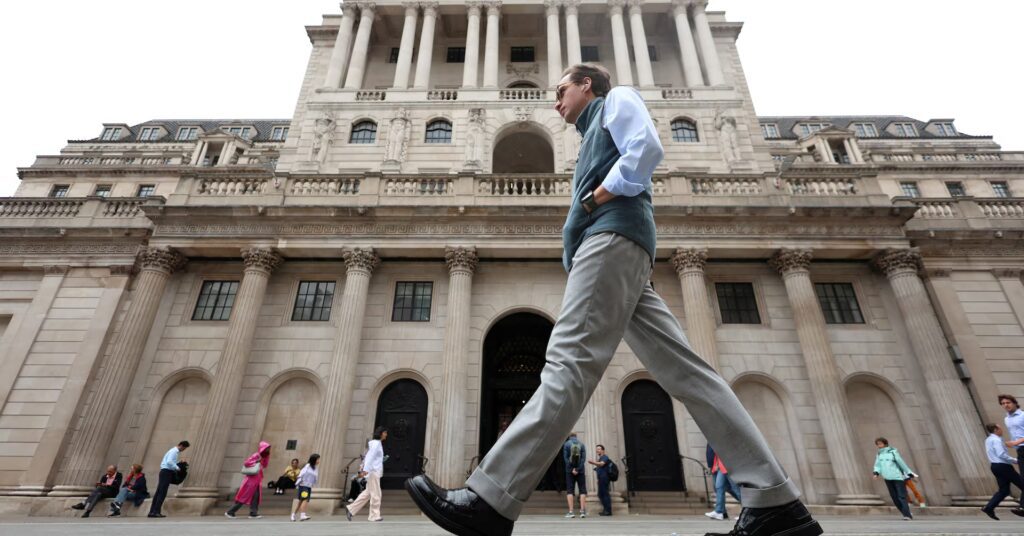LONDON, Nov 10 (Reuters) – The Bank of England proposed on Monday that issuers of widely used stablecoins should be allowed to invest up to 60% of the assets backing them in government debt, as part of a series of new rules that suggest a softening of its approach to the sector.
In its latest proposed rules expected next year, however, the central bank stuck to its plan to cap the amount of stablecoins that individuals and businesses can hold, a move that sets it apart from regulators in the European Union and the United States.
Register here.
The crypto industry had sharply criticized a 2023 BoE proposal to require issuers to hold all their assets in interest-free accounts with the central bank.
The move, according to the document, would effectively prevent the widespread adoption in the UK of stablecoins, which typically generate profits from investing assets.
The BoE has now suggested that 40% of assets should be held at home.
“WE LISTENED CAREFULLY TO THE COMMENTS”
“Today’s proposals mark a crucial step towards implementing the UK stablecoin regime next year,” said Sarah Breeden, BoE deputy governor for financial stability.
“We have listened carefully to feedback and amended our proposals to achieve this, including on how stablecoin issuers interact with the Bank of England.”
The BoE, which plans to supervise only stablecoins deemed capable of being widely used for payments, also outlined a temporary regime for issuers previously under the Financial Conduct Authority, initially allowing them to stake up to 95% of collateral assets.
The central bank, however, held back on plans unpopular with the crypto sector to cap stablecoin holdings, proposing limits of 20,000 pounds ($26,842) for individuals and 10 million pounds for businesses.
Large companies, such as supermarkets or trading platforms, could request exemptions, the BoE said.
The BoE has stressed that these caps are intended to be temporary and will be lifted once financial stability concerns have eased.
In a new proposal, the BoE said it would also consider offering central bank liquidity facilities to systemic stablecoin issuers during periods of market stress, providing them with a safety net if they are unable to sell their reserve assets in the private market.
Stablecoins used as assets for non-systemic purposes, such as buying and selling crypto tokens, would not fall under the BoE regime and would instead be supervised by the FCA.
The consultation runs until February 10.
MORE CLARITY STILL NEEDED, SAYS CRYPTO EXECUTIVE
Although the regulatory clarity was welcomed by the crypto industry, some said the BoE could have gone further.
Tom Duff Gordon, vice president of international policy at cryptocurrency exchange Coinbase, said the bank could have allowed up to 80% of its assets to be invested in high-quality liquid assets like government bonds.
“The industry (also) needs more clarity on when and on what basis these caps could be lifted,” he added.
($1 = 0.7451 pounds)
Reporting by Phoebe Seers; Editing by Tommy Reggiori Wilkes and Jan Harvey
Our Standards: The Thomson Reuters Trust Principles.




